How Soil Fumigation Works
Soil Is Injected
Volatizes Into Gas
Reduces Harmful Pathogens
Fumigant Decomposes
Crop Planting
Healthy Plants
A basic overview of how fumigation conditions the soil for planting and optimum plant health.
- Fumigants are injected as liquids into the soil to supress harmful insects, nematodes, weeds, bacteria, fungi, and diseases that have invaded a field.
- The fumigant volatizes into gas diffusing through the soil air space, radiating out from the points of injection.
- The treatment significantly reduces the harmful pathogens and rebalances the native beneficial soil microbe population, conditioning it for planting.
- The fumigant decomposes rapidly in the soil; and some fumigants, like Chloropicrin, actually biodegrade into plant nutrients.
- Crop planting takes place in the newly conditioned soil.
- Healthy plants are able to maximize their water and nutrient use and grow to full yield potential with no uptake of fumigant into the plant root or residue on the plant.
Application & Soil Preparation
Basic Application Methods
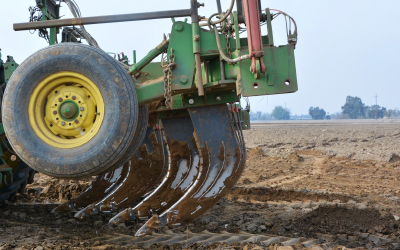
Shank Broadcast
This method injects the fumigant into the ground. Commonly done with narrowly spaced, knife-type shanks with tubes attached to deliver the fumigant.
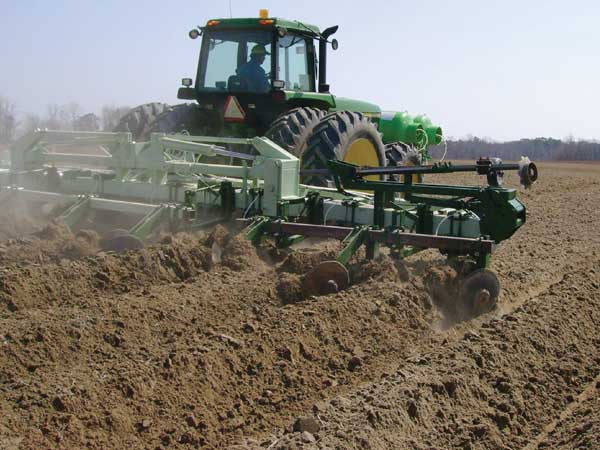
Shank Row/Bed
Fumigant applied to raised, shaped rows or bed where plants will grow. Product is applied through shanks with tubes attached to deliver the fumigant. The number of shanks varies dependent on the width of the rows/beds.
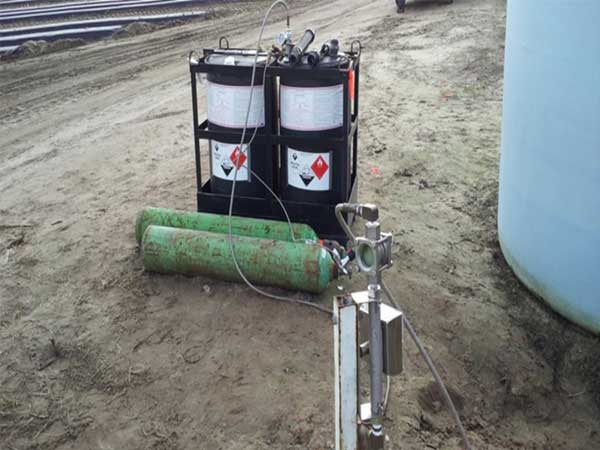
Drip Fumigation
Drip method utilizes the drip irrigation system to deliver the fumigant with irrigation water providing distribution in the soil.
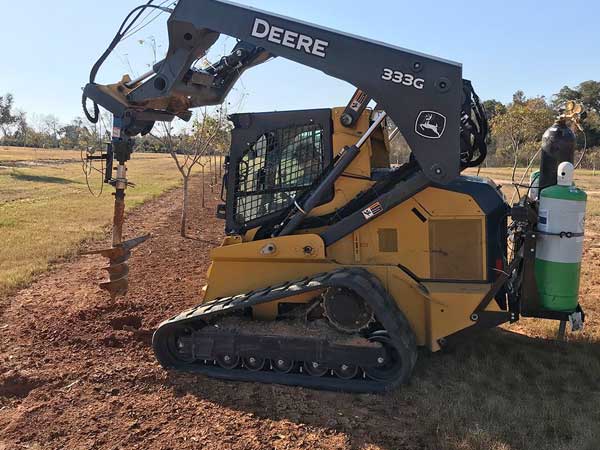
Precision Fumigation for Orchards
The process starts with excavating the tree site and backfilling it. The fumigant is safely injected in the root zone area using an auger probe.
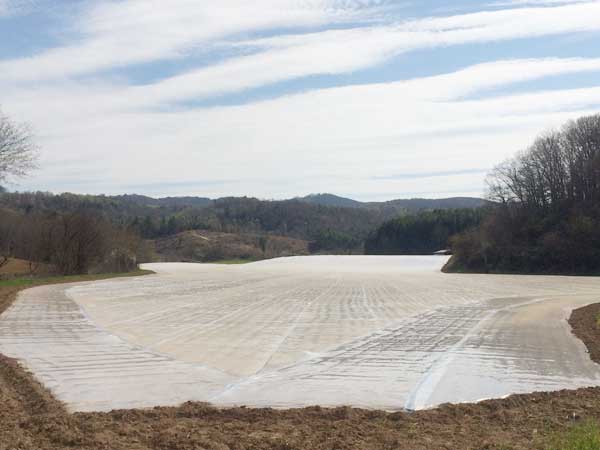
Broadcast Tarp
Solid tarp coverage of broadcast applied fumigants when maximum control of pest is required.
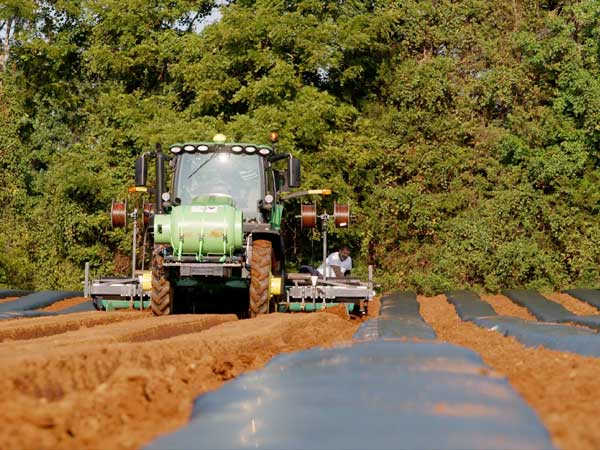
Bedded Tarp
Fumigants are applied in the bedded row by either shank or drip method underneath polyethylene tarp. Tarps prevent fumigant from escaping thus increasing (concentration x time) values for maximum efficacy.
One Pass and You are Done
Fumigants can be applied on their own or co-applied with other fumigants. One pass and you are done – helping with reduced application costs, a shorter plant back window, and broad-spectrum efficacy.
Soil Preparation: Before You Fumigate
Quality of soil preparation determines the quality of product performance, safety of the applicators, and the environment.
-
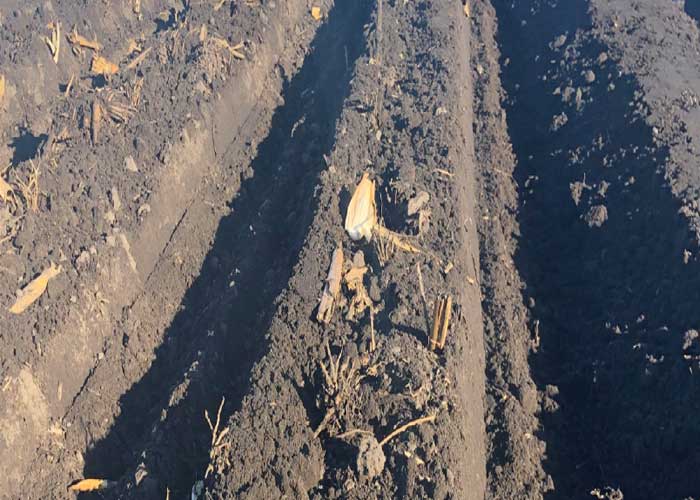
CONSIDER YOUR ROTATION
The previous rotation crop influences timing and quality of ground preparation. Crops such as corn need more soil preparation time before fumigation due to stubble and root masses. Small grains like soybeans and wheat are typically easier to till in and typically allow a longer window for soil fumigation to take place. Soil needs to be free of trash to reduce fumigant “tie up” in organic matter.
Crop residue slows fumigant movement by absorbing fumigant, which decreases the application rate for target pathogens.
Crop Residue can provide “chimneys” in the soil for the fumigant to escape into the air and increase the possibility of an off-gassing.
-
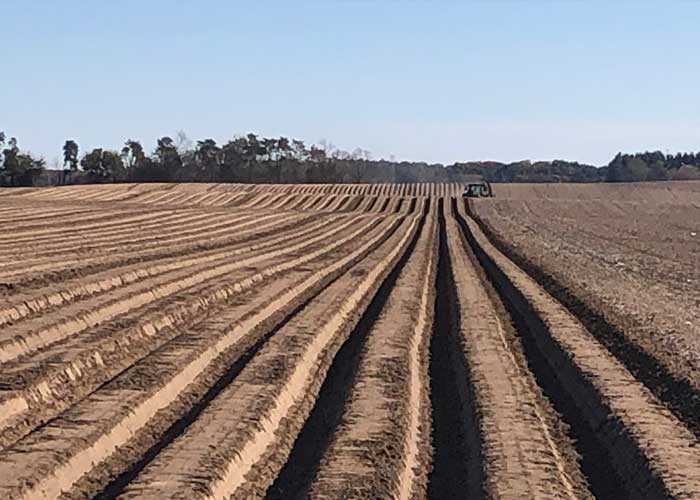
CONSIDER YOUR SOIL TILTH AND TEXTURE
Factors: clods, moisture content, aeration, water infiltration and drainage
Clods and hardpans have less pore space which slows fumigant movement while increasing potential for off-gassing.
Best soil tilth for fumigation allows diffusion of fumigant through soil, but does not allow escape when soil surface is sealed properly. Remember, the fumigant can’t penetrate clods in soil, which could leave diseased soil when clods breakdown.
Be sure to allow enough time before fumigation to work the ground to break up clods and loosen the soil. The soil should be worked deeper than fumigation depth. The two examples above are excellent examples of well prepped ground and sealed soil surface.
-
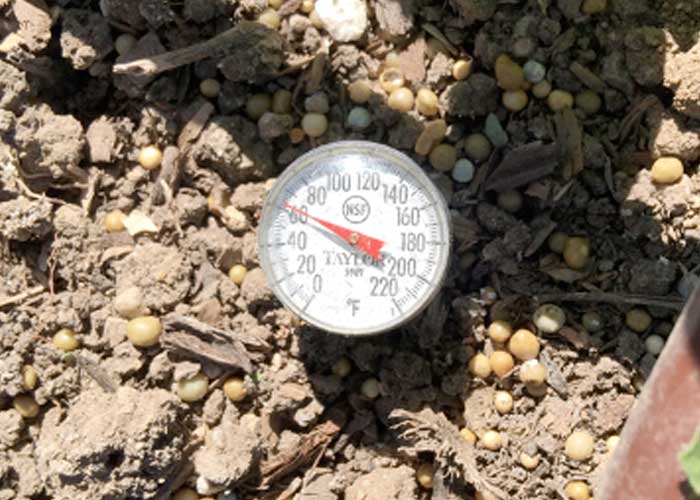
CONSIDER YOUR SOIL TEMPERATURE
Soil temperatures need to be within the 40°-90° F range at 8-10” soil depth to apply fumigant. Too cold and the fumigant won’t achieve efficacy and too hot the possibility for off-gassing rises. Making sure that you have the soil prepared and ready to apply fumigant during the ideal temperature range is an important factor to consider.
-
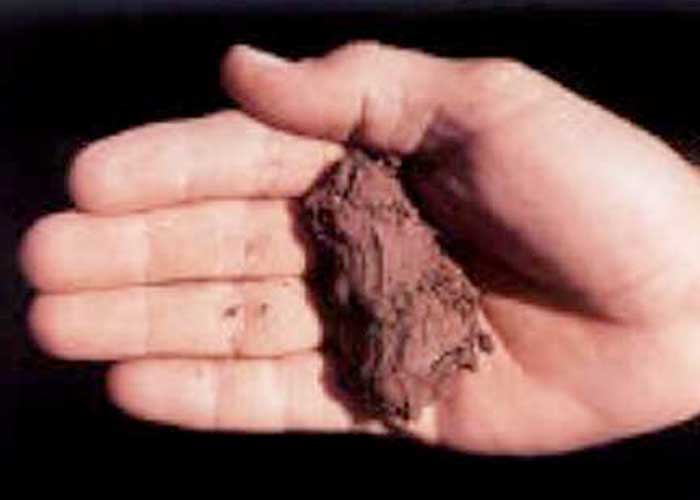
CONSIDER YOUR SOIL MOISTURE
When prepping your soil prior to fumigation take into consideration soil moisture. Insufficient moisture affects soil sealing. Soil moisture should be betwen 50-75% moist and should be able to clod up in your hand. Course-textured soils require higher moisture content compared to fine-textured soils.
Preventing Soil-Borne Diseases
Destructive pests such as nematodes, fungi, insects, weeds, and other pathogens can be devastating to a crop.
Many common soil-borne issues can be supressed with fumigation.
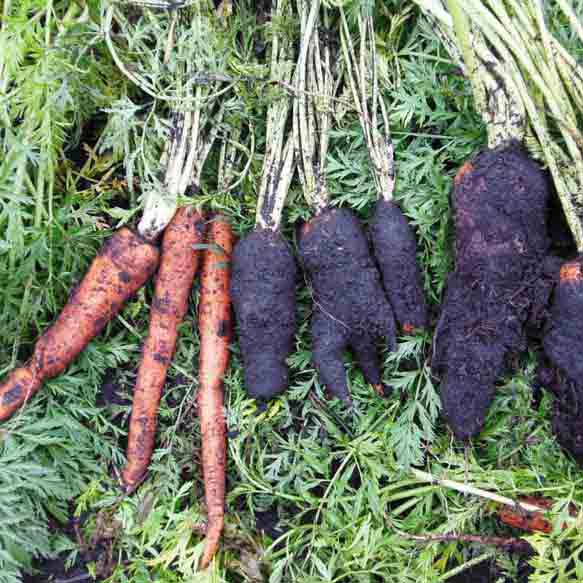
Violet Root Rot
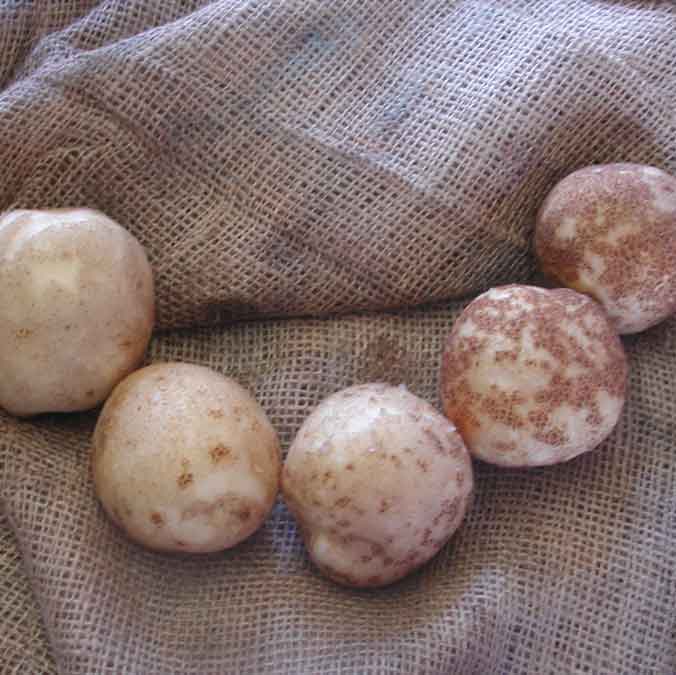
Common Pitted Scab
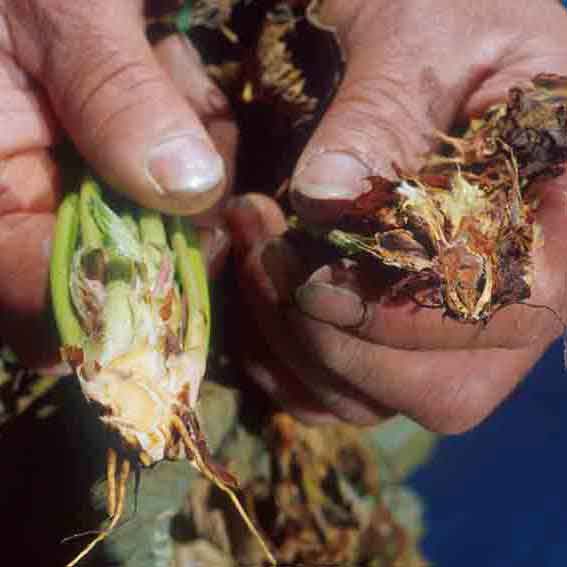
Root Knot Nematode

Pythium Root Rot

Phytophthora Wilt

Verticillium Wilt
Why Fumigate?
Fungi
The most common soil-borne pathogens. While not all fungi cause plant problems, over 8,000 species do. Most plants are susceptible to some type of fungus.
- Root rots cause the root system to begin to decay. Symptoms may include wilting, yellowing, stunting, dieback and eventual death. Some common root rot fungi include: Cylindrocladium, Pythium, Phytophthora, and Rhizoctonia.
- Stem, collar, and crown rots have symptoms similar to root rots, but the rotting starts at or above the soil line. Common pathogens to watch out for include: Phytophthora, Rhizoctonia, Sclerotinia, and Sclerotium.
- Wilt pathogens, like Fusarium oxysporum and Verticillium cause wilting of the plants, despite adequate water.
Damping-off diseases affect young seedlings. They can be caused by a handful of fungi, including Pythium, Phytophthora, Rhizoctonia and Sclerotium rolfsii.
Bacteria
Examples include Erwinia (soft rot), Rhizomonas (corky root of lettuce), Streptomyces (potato scab, soft rot of sweet potatoes), and Agrobacterium (crown gall).
Nematodes
Phytopathogenic nematodes are microscopic unsegmented worms. They are especially problematic for root crops, like carrots, but they can affect many types of crops, from ornamentals to orchard trees. Root knot nematodes cause distortion and swelling of roots and can affect the plant’s vigor. Needle nematodes feed on the tips of roots, causing branching and swelling. Stubby root nematodes cause short, stubby roots. There are many more types of pathogenic nematodes, including lesion, cyst, dagger, burrowing, reniform, sting, and spiral.
Insects
Fumigation suppresses all life stages (egg, larva, pupa, adult) of many destructive insect and other arthropod pests, including garden centipedes and root-feeding beetle larvae.
Optimizing Harvest Yields
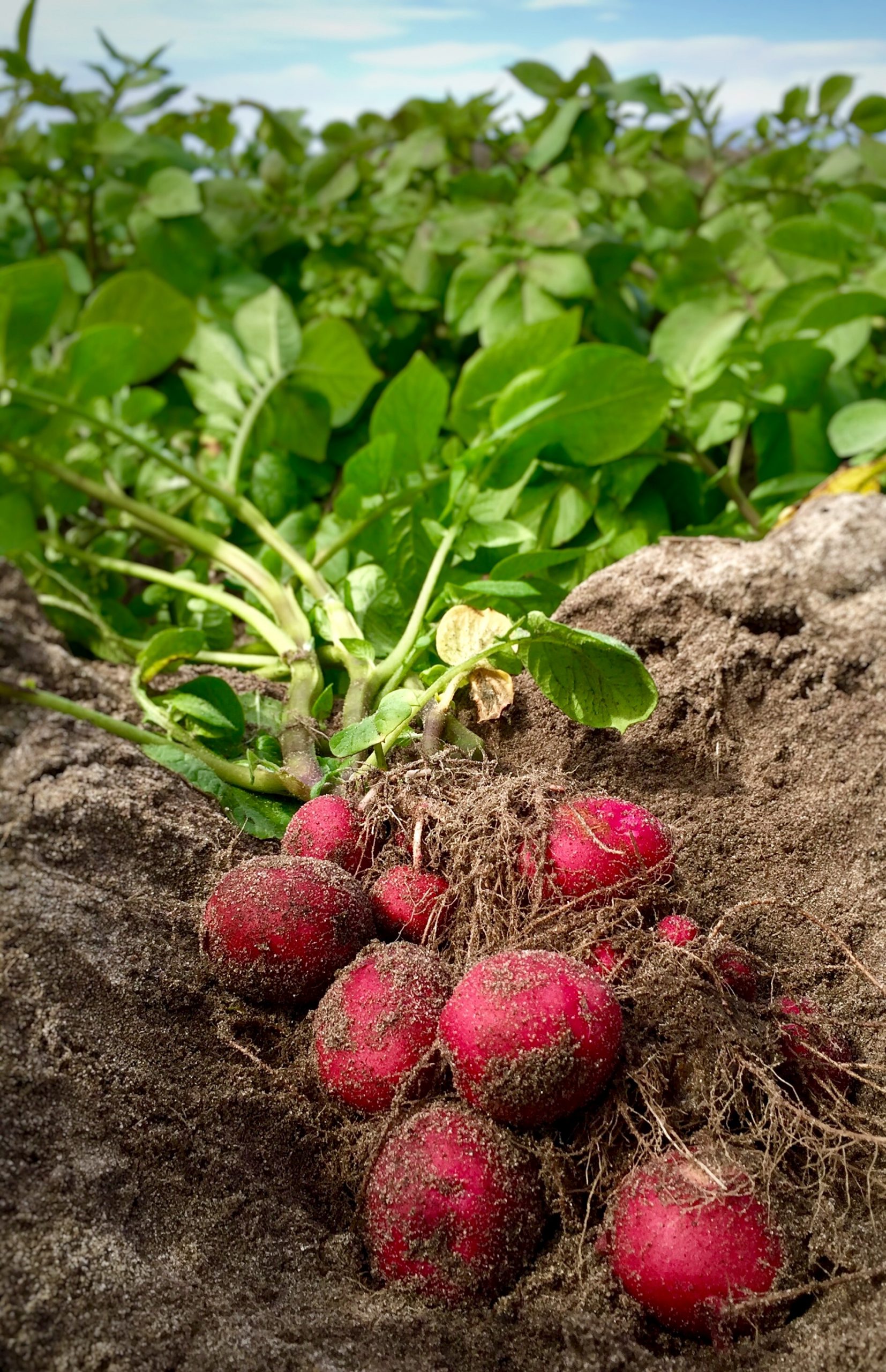
Soil fumigation provides benefits to both consumer and grower.
Chloropicrin soil fumigants are uniquely effective because in their gaseous form they disperse through the soil and reach nearly all the pest organisms in the treated zone. Properly applied fumigants are particularly effective at treating more than one soil-borne problem. Without them, separate chemicals would be necessary. Consumers are able to buy more fresh fruits and vegetables of higher quality at a price they can afford. Growers are able to maximize field usage with shorter crop rotational intervals and greater yields suitable for sale.
Fumigation provides a healthy root system for potatoes, onions, carrots, strawberries, melons, nuts, grapes, cucumbers, tomatoes, tree fruit, peppers, eggplants, flowers, nurseries and more.
Stewardship & Sustainability
Regulated Application & Safe Use
- Soil fumigants play an important role in agriculture, nursery, and greenhouse production.
- Soil fumigation provides benefits to both the consumer and the grower. Yet the chemical properties that make them so effective in managing difficult-to-control soil pests and diseases require caution and proper handling. Farming chemistry – “plant medicines” – used in soil fumigation are regulated as closely as people medicines. Maybe even more so, since fumigants are also reviewed for their total environmental impact.
TriEst Ag is a champion of field performance, public safety, and environmental stewardship.
Product Stewardship
- TriEst Ag is committed to the responsible use of farming chemistry for safety and efficacy.
- We have prioritized the financial investment and countless man hours in the safe development and stringent registration of products that treat our growers’ problems efficiently. With specific formulations, thousands of in-field application trials, and hundreds of university research studies, we are constantly striving for solutions that are “just right” – no more, no less than what is right for our customer and safe for our community.
Farming chemistry works hard to protect our food supply and health.
Years In The Making
- While each product is different, generally it takes 10 or more years from product conception to registration. The hurdles are onerous and extensive, as they should be. Powerful soil chemistry needs to help growers overcome crop-destroying pests, while simultaneously promoting health and safety – since that is what the outcome of these crops – life-sustaining food – is for in the first place.
The key components of our fumigants – Chloropicrin and 1,3-D – have been registered as soil fumigants for over 50 years.
Sustainability:
Using Our Resources Wisely
- We would use more land, more fertilizer, more pesticides, and more water without crop protectants.
- With total food demand expected to increase 70 percent by 2050 – and food prices expected to rise as much as 100 percent during that time—sustainable agriculture will not just be instrumental, but critical, to increase productivity in the face of significant environmental constraints and challenges. (Source: FAO.org)
Crops compete with 80,000 plant diseases, 30,000 weed species, 10,000 insects and 3,000 worms. We would spend 30–40% more of our income on food without crop protectants.
Soil Health
The soil health benefits of soil fumigation with Chloropicrin-based products are two-fold:
Soil fumigation immediately knocks back soil borne disease giving plants their best start.
Suppressed disease allows the native species to rebound in the soil.
This healthy diversity and population of soil microorganisms in the root zone promote plant health and crop production.
The soil health benefits of soil fumigation:
- Promotes native beneficial soil micro-organisms.
- Supports growth of a healthy root system.
- Improves water and nutrient-use efficiency.
- Results in thriving plants with less crop stress.
- Increases marketable crop yields.
Over 50 years of use have proven Chloropicrin’s track record of suppressing disease and improving sustainable crop production. University studies and research field trials confirm that Chloropicrin acts as a selective agent, supporting the repopulation of native, beneficial microbes.
Supresses:
- Verticillium spp.
- Common Scab
- Rhizoctonia spp.
- Collototricum spp.
- Fusarium spp.
- Pythium spp.
- Phytophthora spp.
- Lesion Nematodes
Does Not Suppress:
- Trichoderma spp.
- Soil mycorrhizae
- Bacillus spp.
- Pseudomonas spp.
- Other native soil microorganisms